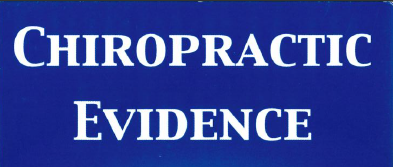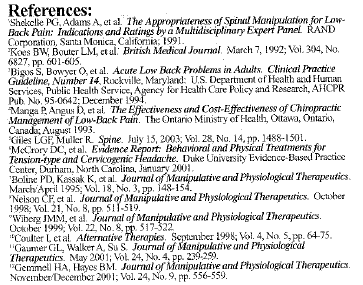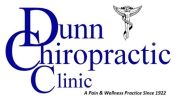

Since its formal foundation in 1895, the chiropractic profession has grown into the second largest of the primary healthcare professionals. In the mid 1970s, chiropractic experienced rapid growth and acceptance Dash largely as a result of positive research findings that validate the benefits of chiropractic care. In the United States, chiropractic is now included in major insurance and federal programs, such as Medicare. Legislation has also been enacted, calling for inclusion of chiropractic services in both the military and the veterans administration. Still, many people are unfamiliar with chiropractic and how it may benefit their health.
What is Chiropractic?
Chiropractic champions, a natural method of healing, advocating, a non-Dash surgical, non-Dash invasive, and drugless approach to the treatment of patients. Grounded, in a view of the individual, as an integrated being, the Doctor of Chiropractic focuses on spinal health and wellness as the keys to overall health and wellbeing.
Because of the interrelatedness of the bodies, various systems, chiropractic theory, holds that spinal mechanics – including the vertebrae, corresponding nerves, and soft tissues – play a primary role in the health of the whole body. Structural, or mechanical abnormalities in the spine, which caused pain, dysfunction, and loss of mobility to thousands of Americans a year, can be successfully treated.
What does a Chiropractor Do?
The primary treatment for spinal dysfunction, (spinal misalignment or subluxation) is a procedure known as vertebral adjustment, or more generally, spinal manipulation. An adjustment is a technique in which the chiropractor skillfully applies pressure to an area of the spine (or other joint) that is not functioning properly or is out of alignment. The procedure is often, but not always, applied manually. The result is reduced pain and inflammation, and restored function to the injured area.
In addition to adjustment or manipulation, patients may also receive a treatment plan that uses psychological procedures, such as ultrasound, electrical, muscle stimulation, controlled exercise, nutritional counseling, and other professional advice that may improve overall health.
Patient progress under chiropractic care will be carefully monitored. Subjective improvements and objective clinical findings will be noted and treat Ment will be modified to meet the patient’s changing condition. Should it be found that another type of health care would benefit healing, a referral to the appropriate provider will be made.
Research supports Chiropractic
Although empirical evidence, suggest that chiropractic is a safe and effective means of natural healing, a growing body of scientific data, Support chiropractic’s effectiveness. The studies listed below are a small fraction of the studies published on the efficacy of chiropractic.
The RAND Study – the RAND corporation, one of the most prestigious centers for research and public policy and health, released a study, which found that spinal manipulation is appropriate for specific kind of low back pain.
The Koes, Clinical Trial – a Dutch project compared manipulative therapy (chiropractic) and physiotherapy for the treatment of persistent back and neck complaints. After 12 months, the manipulative therapy group showed greater improvement in the primary complaint, as well as in physical function, with fewer visits.
The AHCPR Guideline – the agency for healthcare policy and research(ahcpr), now the agency on health research and quality (ahrq), an arm of the U.S. Department of Health and Human Services, released a clinical practice guidelines for the treatment of a cute little back problems. The guidelines recommend the use of spinal manipulation as an effective method of symptom control. The researchers developing the guideline found that “manipulation… is safe and effective for patients in the first month of a cute low back symptoms without radiculopathy, [disease of the spinal nerve roots].”
The Manga Study – this study researched both effectiveness and cost effectiveness of the chiropractic management of low back pain. Dr. Pran manga, the studies author, found “on the evidence, particularly the most scientifically valid clinical studies, spinal manipulation applied by chiropractors is shown to be more effective than alternative treatment for LBP [low-back pain]. Many medical therapies are of questionable validity or are clearly inadequate manipulation as treatments for patients with chronic (longer than 13 weeks) spinal pain. “The consistency of the results provides, despite some discussed short comings of this study, evidence that in patients with chronic spinal pain, manipulation, if not contraindicated, results in greater short-term improvement than acupuncture or medication,” concluded that study.
The Duke Study – Based on a literature review of several headache treatment options, a panel of 19 multidisciplinary experts concluded that spinal manipulation resulted in almost immediate improvement for cervicogenic headaches and had significantly fewer side effects and longer-lasting relief of tension-type headache than a commonly-prescribed medication. Researchers concluded the following: “Manipulation appeared to result in immediate improvement in headache severity when used to treat episodes of cervicogenic headache when compared with an attention-placebo control. Furthermore, when compared to soft-tissue therapies (massage), a course of manipulation treatments resulted in sustained improvement in headache frequency and severity.”
The Boline Study – This randomized controlled trial compared six weeks of spinal manipulative treatment of tension-type headache by chiropractors to six weeks of medical treatment with amitriptyline, a medication often prescribed for the treatment of severe tension headache pain. Researchers found that chiropractic patients experienced fewer side-effects (4.3%) than the amitriptyline group (82.1%) and while both were effective during the treatment phase of the study, only the chiropractic patients continued to report fewer headaches when treatment ended.
The Nelson Migraine Study – This study compared chiropractic spinal manipulation to amitriptyline (a medication often prescribed for the treatment of headache) for the treatment of migraine headache. The researchers found that “spinal manipulation seemed to be as effective as a well-established and efficacious treatment (amitriptyline), and on the basis of a benign side effects profile, it should be considered a treatment option for patients with frequent migraine headaches.” The researchers also found that in the weeks immediately following treatment, patients who had received spinal manipulation had a 42% reduction in headache frequency, compared to only 24% of those who took amitriptyline.
The Colic Study – when researchers compared spinal manipulation for the treatment of infantile colic to dimethicone (a medication for colic), they came to a simple conclusion: “Spinal manipulation is effective in relieving infantile colic.”
Is Chiropractic Right for You?
The choice of healthcare provider is a highly personal one. Concerns for most people include the education of the practitioner, the ability of the practitioner to make an accurate diagnosis, and whether other patients would recommend that doctor. Chiropractors can easily hold their own Dash in some instances surpass – their colleagues from other healthcare professions.
A Comparative study of DC & MD Educations –
This study examined the education provided in medical school to that provided in chiropractic school. The researchers found that “considerable commonality exists between chiropractic and medical programs.” Surprisingly, it was found that more time is spent in basic and clinical sciences in chiropractic education. Not surprisingly, chiropractic education spends more time in nutrition, while medical education spends more time in public health. In addition, little time in medical school is devoted to the study of the neuromusculoskeletal system and related health problems; this is a major focus in chiropractic education.
The Abt Study – Abt Associates of Cambridge, MA, convened two expert panels (one panel primarily of medical doctors and the other entirely chiropractic), and asked the panels to investigate the role of the Doctor of Chiropractic as a primary health care provider. Both panels agreed that, with respect to a list of 53 primary care functions found to occur in daily medical offices, chiropractors are capable of making diagnosis in 92% of these activities. The researchers concluded that “the overriding sense of agreement between allopathic and chiropractic physicians in terms of the scope of primary care activities, suggesting that there is opportunity chiropractors and medical doctors to work together on patient care and organizational strategy.”
The IPA Study – A survey of patients of chiropractors in an independent physicians’ association found that, when asked if they would recommend their Doctor of Chiropractic to others, 95.5% of the patients said “yes.” Other results were as high:
- Length of time to get an appointment – 84.9% said Excellent
- Access to the office by telephone – 95.5% Excellent or Very Good
- Length of wait at the office – 92.4% Excellent or Very Good
- Time spent with the doctor – 95.5% Excellent or Very Good
- Explanation of what was done at the visit – 95.5% Excellent or Very Good
- Personal manner of the chiropractor – 100% Excellent or Very Good
- Overall visit – 100% Excellent or Very Good
While research is helping the scientific community to consider the effectiveness of the chiropractic method of treatment for various conditions, thousands of individuals all over the world are finding restored mobility and relief from pain in the hands of their Doctor of Chiropractic. As health care choices become increasingly for designing a personal plan for optimal health, it is clear that chiropractic will be a choice for many. How about you?


